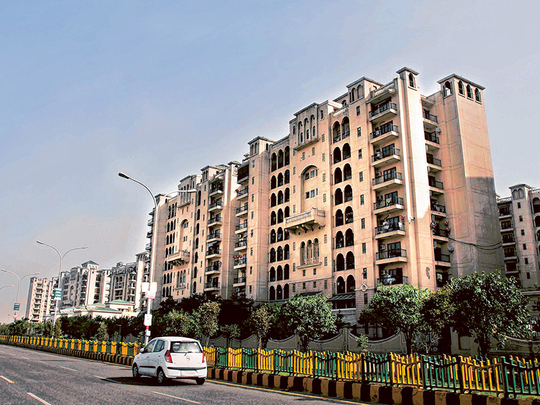
Dubai: India’s developers could do with more weakening of the rupee ... if they are building up their hopes of selling more to non-resident Indians (NRI). More so, as enough domestic buyers still can’t seem to get enthused about putting in their funds into the property market, one of the underperforming sectors in the Indian economy.
Which is why its developers need to see more NRI funds flowing in. And help could be on its way — a Reuters poll of currency analysts last week suggested the rupee could push above 64 to the dollar in the near term and breach the 65 level within a year. (The process could be accelerated as and when the US Federal Reserve finally decides to effect that first interest rate hike.)
Until the start of this year, NRIs had other options to exercise their investment funds such as in Indian stocks. The second-half of 2014 proved particularly fruitful for a stock market exposure, and “It is possible that many NRIs switched to stock market when the going there was good,” said Colonel A. Sridharan, Managing Director of Coimbatore-based Covai Property Centre. “If the opportunities of investing in other avenues can get better a ROI (return on investment), surely NRIs would also go for it.
“For many developers, funding became an issue with tight RBI (Reserve Bank of India) controls and public sector banks not showing good results. Property prices have been corrected by developers where there was overpricing. The mantra is “affordable prices” and that is what one sees today.”
India’s developers will get a chance to try and convince expat Indians that property values and currency exchanges are now in their favour at the Indian Property Show opening Thursday in Dubai.
“NRIs are showing a renewed interest at a time when domestic demand is only just starting to pick up as various plans get clearance certificates,” said Sakshi Katiyal, Chairperson of Home & Soul. “Developers have also undertaken special marketing efforts to target NRIs ... With city limits expanding to the peripheries, investors have variety, ranging from affordable to luxury and special housing projects like senior homes.” According to Katiyal, in the 12 months to end March 2016, the sector could even turn in a 11 per cent growth.
“Rather than saying that expectations are not matching [selling] rates, I would say this is the best time to invest in Indian realty as prices are quite low and there haven’t been any major increase,” said Vikas Bhasin, Managing Director at Saya Homes. “People who invest in the current market will surely reap better returns on their capital in the near future. Basically, prices are quite low and buyers are aware.”
On the regulatory side, the Modi Government’s concerted push to get clearance on the Land Acquisition Bill could help drive bullish sentiments back into the sector. The central bank too is doing its bit, having cut interest rates thrice since the start of the year, and placing the onus on banks to put more funds — at a lower cost — into the hands of borrowers.
But Ashwinder Raj Singh, CEO — Residential Services at JLL India, is not one to be over enthused about the likely impact these rate cuts would have in stoking buyer interest in property. “Buyers are generally more interested in the property rates being quoted, which can often be negotiated downward,” said Singh. “As such, deals are happening even in cities where property prices appear to be exorbitant on the surface.
“Developers are open to negotiation — they are just averse to announcing rate cuts for fear of triggering a wholesale market correction.”
For visitors trooping to the Indian Property Show in the next few days, the message is clear — negotiate hard. You never know the sweet deals you might land up with.












